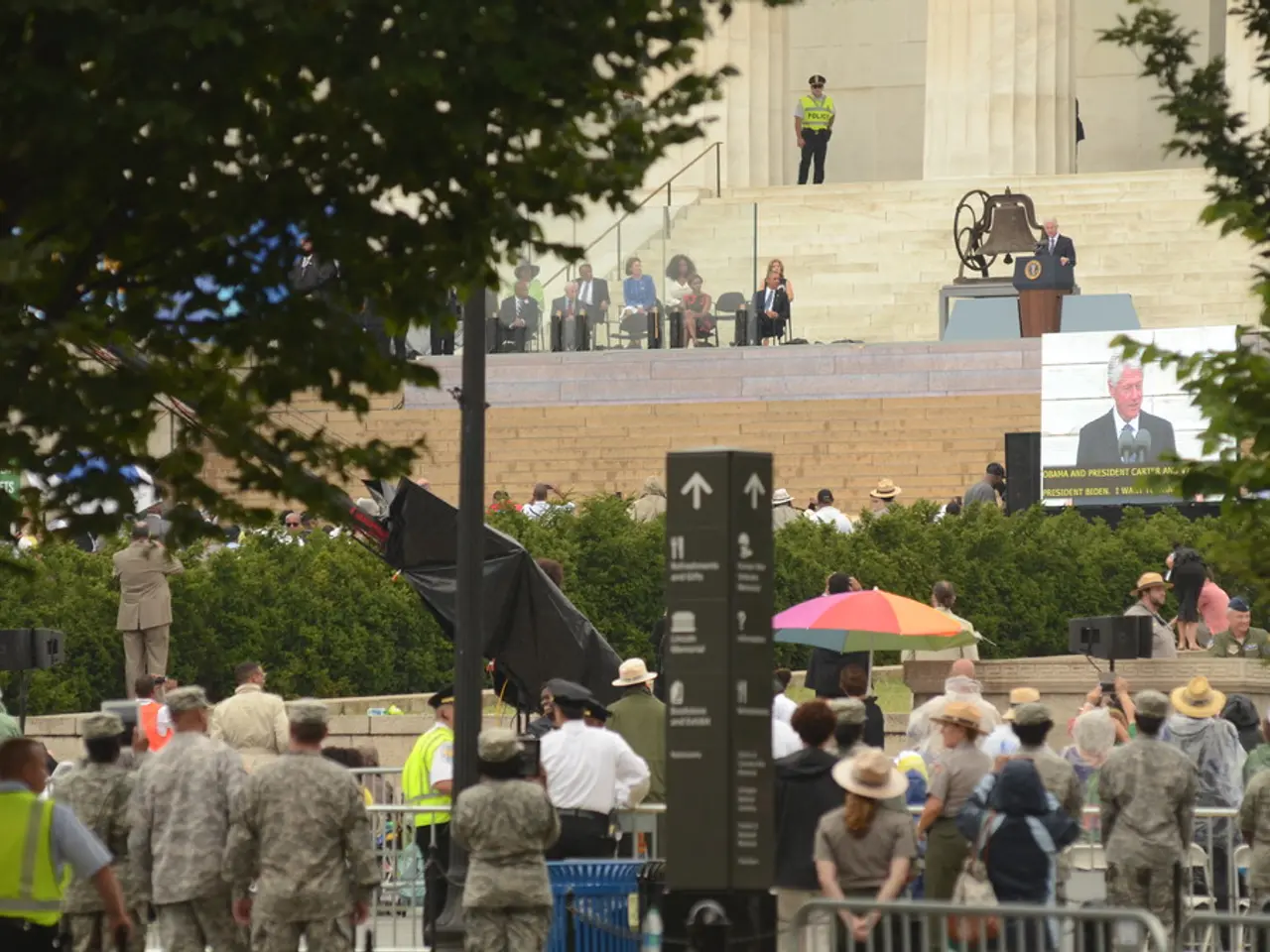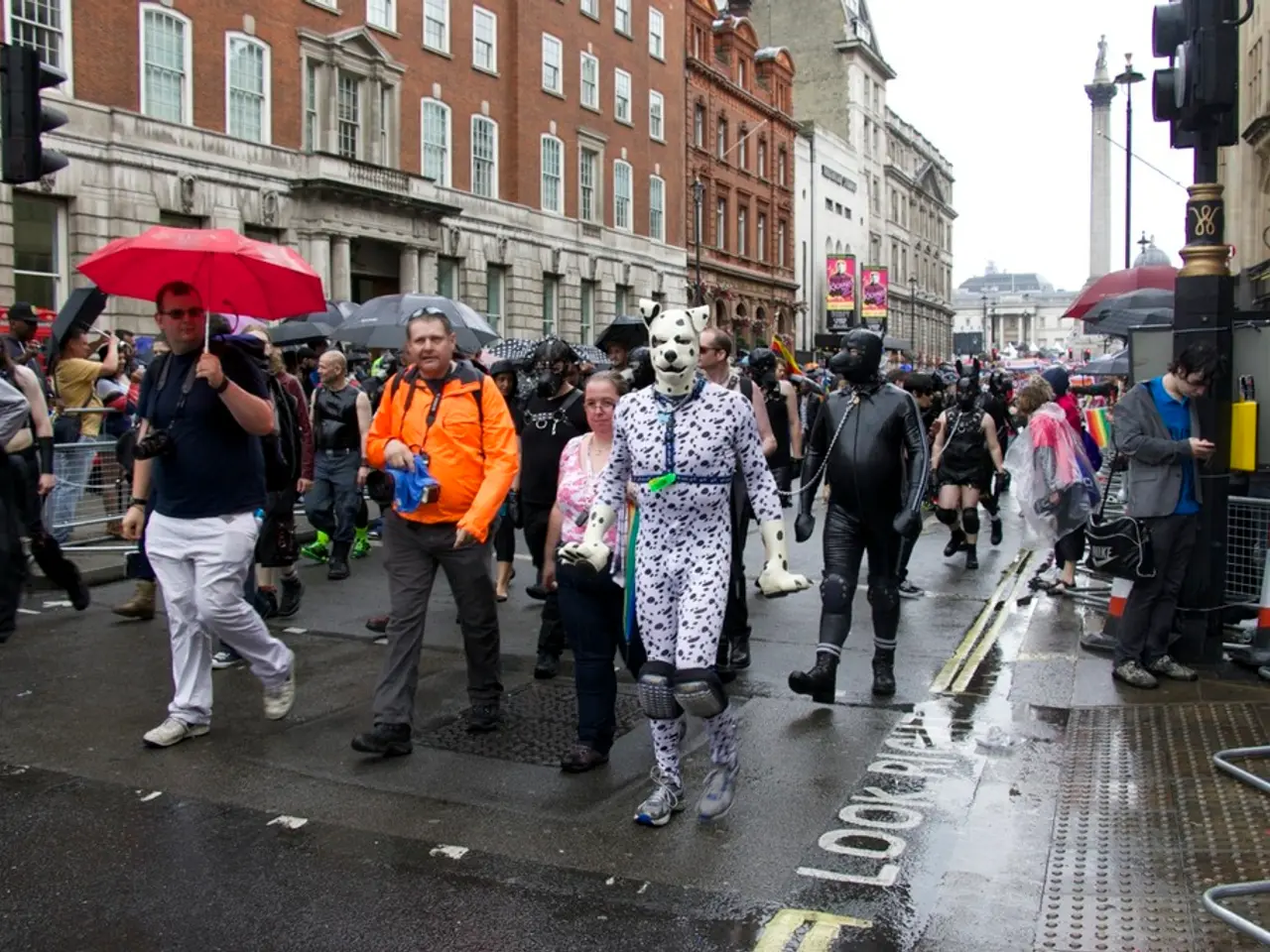Reduction of personnel at the State Department is essential for building a more top-notch workforce, according to the deputy secretary, as discussed with legislators.
The Trump administration's foreign policy agenda has left a significant imprint on the U.S. State Department, particularly in terms of its workforce. A major Reduction in Force (RIF) and personnel cuts were implemented, leading to a reduction of approximately 1,353 positions at the State Department, representing about 15% of its Washington-based staff[1][2][5].
This downsizing was part of a broader effort by the administration to shrink the size of the federal workforce as a strategic and budgetary move. The personnel reductions corresponded with an overhaul of the department that included the removal and replacement of numerous officials, aligning the department more closely with the administration's agenda[1][2].
The cuts were described as the *largest reduction* seen at the State Department, reflecting a major shake-up aligned with the Trump administration's emphasis on reshaping U.S. foreign policy priorities and its administrative structure. The State Department set up over 700 competitive areas for civil service employees and nearly 800 competitive areas for the Foreign Service before the layoffs[1][2].
However, concerns were raised by Democrats on the House Appropriations Committee about the State Department's capacity to carry out its national security mission, given the personnel cuts[1][2]. Rep. Madeleine Dean (D-Pa.) stated that the layoffs at the State Department have reduced its capacity to carry out arms control and interdict illegal drugs before they arrive in the United States[1][2].
In a bid to create a more efficient and effective organisation, the State Department's reorganisation plan will impact about 300 offices, with plans to eliminate 100 offices and consolidate another 100 offices[1][2]. The reorganisation will focus on offices and bureaus whose functions are no longer relevant or not aligned with the administration's policy priorities[1][2].
Secretary of State Marco Rubio announced his reorganisation plan in April, with the department having over 1,500 office units located in the United States at that time[1][2]. The Trump administration is calling on Congress to cut the State Department's funding nearly in half[1][2].
In response to criticism, the State Department official, Michael Rigas, defends the layoff of over 1,350 employees, stating it will create a "higher quality" workforce for the Trump administration's foreign policy agenda[1][2]. The national security and State Department subcommittee of the House Appropriations Committee advanced a fiscal 2026 spending bill on Tuesday that would cut State Department and related national security agency funding by 22%[1][2].
The reorganisation of the State Department will merge, eliminate, consolidate, or streamline nearly 45% of the department's domestic offices[1][2]. The Trump administration's foreign policy agenda, favouring a leaner diplomatic corps and often a more unilateral or transactional foreign policy stance, has translated into substantial workforce and operational changes within the State Department[1][2].
[1] CNN, "Trump administration's State Department reorganisation plan in detail", 2020. [2] Politico, "Trump administration cuts State Department staff by 15%", 2020. [5] The Washington Post, "Trump administration's State Department cuts: A timeline", 2020.
- The Trump administration's focus on reshaping the federal workforce extended beyond the State Department, with plans to reimagine the civil service workforce to better align with the administration's goals.
- In an attempt to revamp the sports sector, some suggest a reimagined workforce with an emphasis on innovation and nimbleness, similar to the manner in which the Trump administration approached the federal workforce, especially the civil service at the State Department.







